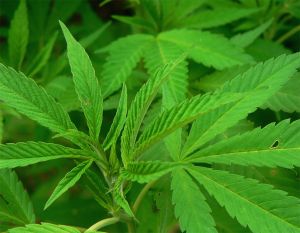When California became the first state to legalize marijuana for medicinal purposes, way back in 1996, there was a firestorm of controversy. Predictions swirled that it would mean a flood of teen addicts, reduced graduation rates and rampant lawlessness.

In the 17 years since then, that hasn’t happened.
In fact, our Los Angeles marijuana lawyers know that most of what has been born of the medical marijuana movement has proven positive. This is despite the fact that many cities – Los Angeles included – stumbled early on when it came to regulation, leading to a host of issues later on. Most notably, those have included efforts to ban dispensaries altogether, as well as federal intervention through the filing of criminal charges and civil forfeiture litigation.
Recently, the New York Times took an in-depth look at what limited legalization of the drug has meant here in the Golden State, how other states have taken a page from our play book on what to do (and what not to do) and how we can learn from other states in legalizing the drug for recreational purposes, as many are predicting will happen eventually.
In the first of this two-part series on the lessons that California’s groundbreaking movement began, we will explore some of those key points, and how we proceed from here.
Let’s start first by discussing what access to medicinal marijuana did not do. It has not increased the number of roadway fatalities, as so many had suggested.
Many anti-marijuana advocates latched onto a survey released earlier this year by the California Office of Traffic Safety, which found that California drivers were twice as likely to be high than drunk. Granted, not all of those who were under the influence of drugs had consumed marijuana. While about 7.3 percent of drivers were reportedly under the influence of alcohol, about 14 percent were under the influence of drugs. About 7.4 percent were under the influence of marijuana.
California does not have any law specifically indicating what the threshold is for intoxication, though it’s something that continues to be debated and considered.
However, consider another recent study published in The Journal of Policy Analysis and Management in which economics professors found a correlation between the increased use of marijuana and the decreased use of alcohol among the 18 to 29 crowd. On the surface, this could appear startling to authorities. However, those states that have legalized marijuana (or at least decriminalized it), have noted a reduction in the social harms resulting from alcohol use. Most notably, there has been a reduction in traffic injuries and fatalities. That’s because stoned driving, while still dangerous and inadvisable, has proven not nearly as fatal as drunk driving.
What has not born out, though, is an increase in high school students using the drug. That same study in the policy analysis journal found no indication that teenagers were increasing their use of the drug in Los Angeles. This is despite the fact that hundreds of dispensaries opened here.
The reality is that dispensary owners didn’t want to risk their operation to sell to underage buyers. Further, there is no indication that high school students are obtaining the drug in any great numbers from patients or parents or even from those still selling it on the black market.
And speaking of the black market, there was concern when California approved medical marijuana that illicit offerings of the drug would thrive, especially as prices for the drug’s legitimate offerings were high.
But that hasn’t happened either, except in areas where the drug is overly-regulated or banned completely. The truth is, most people would rather buy their pot legally from a licensed operator whose product is tested and whose operation is safe – even if they have to pay a little more money for it. Prices haven’t even been driven up exponentially though in places like Los Angeles because the sheer number of dispensaries has created fierce competition that has kept prices perfectly within reason.
In the next part of our series on California’s marijuana access lessons, we’ll explore how introduction of the drug into our communities has resulted in numerous positive outcomes.
The Los Angeles CANNABIS LAW Group represents growers, dispensaries, collectives, patients and those facing marijuana charges. Call us at 949-375-4734.
Additional Resources:
Few Problems With Cannabis for California, Oct. 26, 2013, By Adam Nagourney and Rick Lyman, The New York Times
More Blog Entries:
California Recreational Marijuana Legalization Efforts Renewed, Oct. 25, 2013, Los Angeles Marijuana Lawyer Blog
